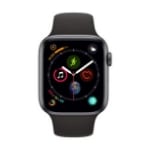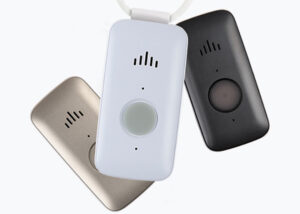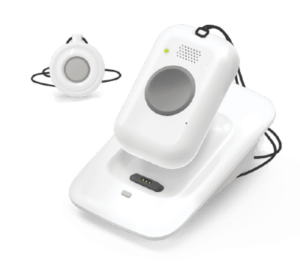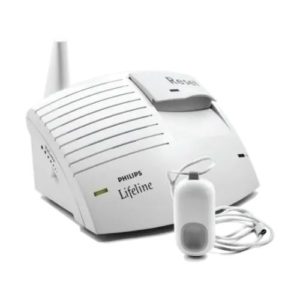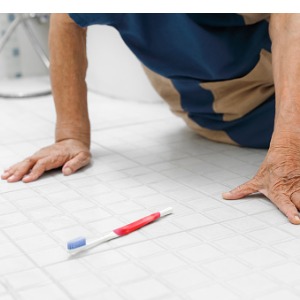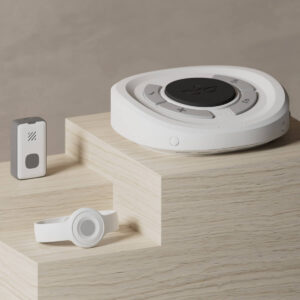We began our search for the best fall detection devices by learning how fall detection technology works. We learned that all wearable fall detection devices contain something called a tri-axial accelerometer, which is just a fancy name for something that senses changes in speed and distance along three lines: forward or backward, side to side, and up and down. For the purposes of fall detection, the tri-axial accelerometers are programmed to only go off when a rapid downward movement occurs.
But there are two flaws in relying only on tri-axial accelerometers for fall detection: Not every fall happens rapidly, and many people fall at an angle rather than crumpling straight down. Combining other sensors to a tri-axial accelerometer improves the accuracy of a fall detection device.
We learned that a gyroscope is the most common secondary sensor in a fall detection device. Its job is to detect angular falls. Other sensors sometimes seen in fall detection devices include magnetometers (which sense changes in Earth’s magnetic pull) or barometric pressure sensors, which can help identify when someone is lying down versus standing up. In other words, they’re useful in detecting slow falls that could be missed by a tri-axial accelerometer or a gyroscope.
Armed with this information, we looked for fall detection devices with multiple sensors.
Another key piece of information we uncovered is that fall detection devices work best when worn around the neck and resting on the breastbone. This reduces the likelihood of false alarms caused by the device swinging around too much, which can happen when the lanyard is too long or the device is worn around the wrist.
That said, some companies have released fall detection watches that combine AI learning with fall detection tech to learn your typical movements and reduce false alarms over time. We chose to look at both watches and traditional pendants when compiling our list of the best fall detection devices.
Finally, there are non-wearable fall detection options that use radio frequencies, cameras, or motion sensors to detect whether someone has fallen in a high-risk area like a bathroom. However, examples of these products are few and far between. Many still seem to be in the experimental phase. We chose to focus on wearable fall detection devices because they promote the wearer’s freedom.
We carefully considered overall utility, ease of use, appearance, and price when evaluating the best fall detection devices.
